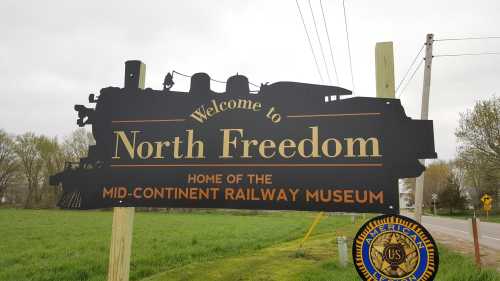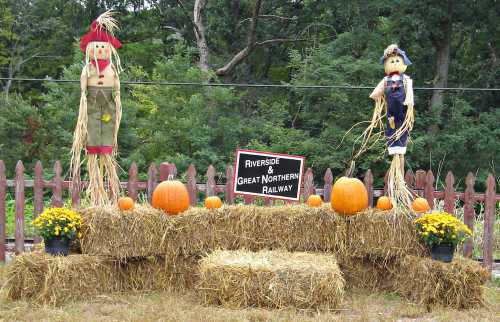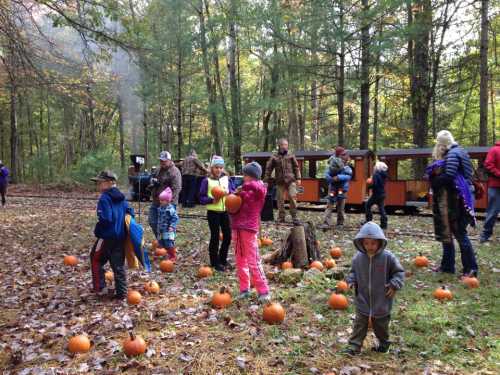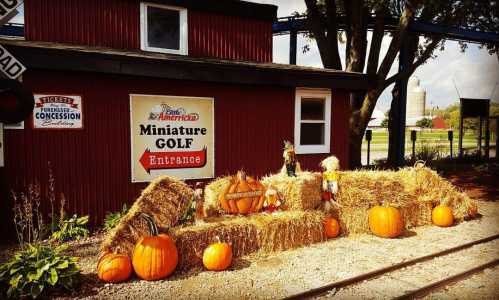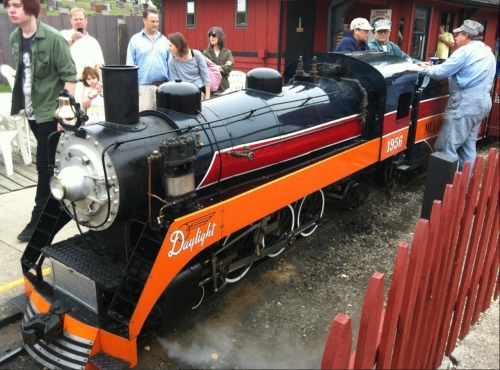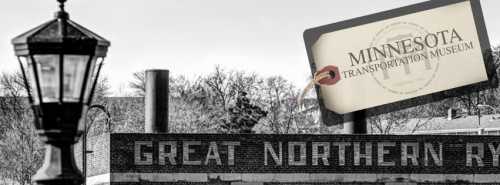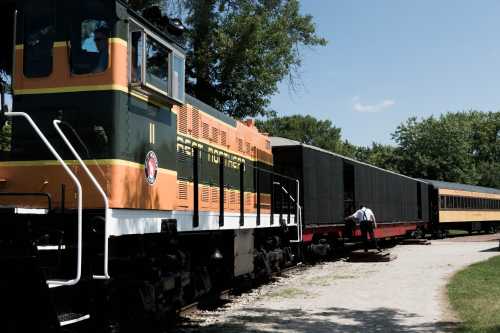Everyone remembers field trip days. Freedom from boring school work and droning teachers and getting to escape the confines of your school building were enough to get you excited, no matter where you were headed. You may not have gone to all of these exact places as a kid, but you probably went somewhere similar. The best part of this list, though, is that you can fill in any gaps in your childhood education or revisit any of these places - these Wisconsin field trips aren't just for kids!
1. Old World Wisconsin - Eagle
An open-air museum, Old World Wisconsin's more than 60 historic farm and village buildings comprise the world's largest museum dedicated to the history of rural life.
The museum sits on 480 acres and depicts rural life in the late 19th century in Wisconsin.
Furthermore, the museum also seeks to show how the different ethnicities that settled in the area may have lived. In addition to field trips, they host adventure camps, workshops, and historic baseball games.
2. State Capitol Building - Madison
The current building, the third capitol building in Madison, began in late 1906 and was completed in 1917 at a cost of $7.25 million.
The Capitol is 284 feet, 5 inches tall from the ground floor to the top of the statue on top of the dome. A 1990 state law prevents any building within one mile of the capitol from being taller than the base of the columns surrounding and supporting its dome.
From 1988 to 2002 the capitol underwent a renovation and restoration project costing $158.8 million. The project converted the capitol into a modern working building, while undoing some work done in previous decades in order to restore it to its original 1917 appearance.
The statue on top is called "Wisconsin" and it wears a helmet with a badger on top. It is made of hollow bronze covered with gold leaf. The statue is 15 feet, 5 inches tall.
Many people think that statue is called "Forward" - the state motto - but there's a separate statue with that name on the Capital ground. The capitol building is located at 2 E Main St, Madison, WI, 53703.
3. Havenwoods Environmental Center - Milwaukee
A 237 acre forest that contains grasslands, woods and wetlands, Havenwoods Environmental Center was created as an urban green space and environmental education center. It is managed by the Wisconsin Department of Natural Services.
4. House on the Rock - Spring Green
Opened to the public in 1960, House on the Rock is an architectural marvel that dates back to 1945 when a man named Alex Jordan decided to build a retreat as awe-inspiring as the view from the rock upon which the House would eventually be built.
It went on to become an intricate mix of displays and architecture.
Jordan never meant to turn the house into a museum. He just bought and built things for his and his guests' amusement. And the house continued to grow.
5. National Railroad Museum - Green Bay
The Wisconsin train museum houses a massive collection of rolling stock including 11 steam locomotives, 14 diesel locomotives, 20 passenger cars, 15 freight cars, six cabooses and an electric locomotive as well as a large archive, artifact and photograph collection.
The museum is one of the oldest institutions in the United States dedicated to preserving and interpreting the nation's railroad history. It was founded in 1956 by community volunteers in Green Bay.
6. Milwaukee County Zoo - Milwaukee
One of the best parts of visiting the Milwaukee County Zoo are the peacocks that roam free on the grounds.
With more than 200 acres and 2,200 animals representing 330 species of animals, there's plenty to see at the Milwaukee Zoo.
The zoo has seasonal hours, so be sure to check their website for specific dates and times.
7. Cave of the Mounds - Blue Mounds
The Wisconsin caves were discovered in 1939 by working mining limestone. Now a National Natural Landmark, the Caves have welcomed millions of visitors in their 75 years.
It takes approximately 100 years for cave onyx, or calcite, to grow one inch. The Cave is more than 1 million years old
The caves have a seasonal schedule, so check their website for specific hours.
8. International Crane Foundation - Baraboo
The largest crane conservatory in the U.S., the International Crane Foundation works to conserve cranes and the ecosystems, watersheds, and flyways on which they depend.
The facility in Baraboo is 300 acres and is home to a captive crane population of 15 different species.
9. Yerkes Observatory - Williams Bay
Yerkes Observatory is a facility of the Department of Astronomy and Astrophysics of the University of Chicago. From the time it was established in 1897 until the mid-1960s, it housed all of the Department's activities. Now it is provides laboratory space for research and instruction.
10. Wisconsin Maritime Museum - Manitowoc
The Wisconsin Maritime Museum combines the history of Manitowoc as a submarine manufacturer during World War II along with preserving the maritime history of Wisconsin and the Great Lakes region.
Though the USS Cobia wasn't one of the 28 submarines built in Manitowoc, it's a National Historic Landmark. It's billed as the most intact WW II Submarine in the nation and as having to the oldest working radar in the world.
The museum has seasonal hours, so check their site for exact information.
11. Peshtigo Fire Museum - Peshtigo
On October 8, 1871, a firestorm roared through Peshtigo and surrounding areas, killing over 2,000 people and destroying the entire city. It was the deadliest fire in U.S. history.
The Peshtigo site is the first registered historical marker in the state.
12. Mitchell Park Domes - Milwaukee
A series of three domes connected with a central lobby, the Mitchell Park Domes are a conservatory, each with a different climate and setting for the plants they house. There is a floral show dome, an arid dome and a tropical dome.
A conservatory has been in this location since 1898. The Domes were completed in 1967.
13. University of Wisconsin Arboretum - Madison
The University of Wisconsin Arboretum is widely recognized as the site of historic research in ecological restoration, the Arboretum includes the oldest and most varied collection of restored ecological communities in the world.
The arboretum is 1,200 acres on site and 513 acres in outlying areas.
14. Horicon Marsh - Horicon
Horicon Marsh was formed from an extinct glacial lake and is the largest cattail marsh in the country. The marsh is on the migratory path of Canada Geese and can see upwards of 200,000 geese in fall. There are also egrets, pelicans, herons, reptiles, amphibians and marsh mammals.
15. Annunciation Greek Orthodox Church - Milwaukee
The Annunciation Greek Orthodox Church in Milwaukee was as designed by architect Frank Lloyd Wright in 1956. It is listed on the National Register of Historic Places. The church is one of Wright's last works. It was completed in 1961, after his death.
At the time of its completion, the building cost was estimated at $1.5 million. It has seating for 1,000.
Depending on where you grew up, your field trips varied. Where else did you go as a kid that you think would be amazing to revisit as an adult? What were your favorite Wisconsin field trips as a kid?
Looking for more underrated Wisconsin day trips? Here are some of our favorite places to take out-of-towners when they visit Wisconsin!
Subscribe to our newsletter
Get the latest updates and news
Thank you for subscribing!






































